Thomas E. Ricks's Blog, page 223
October 24, 2011
China: Wind superpower
I didn't realize China had the world's
largest windpower generating capacity. How is that possible when we have
Fox News?
October 21, 2011
Rumelt on strategy (V): Where he falters, and where he reminds me of Clausewitz in his discussions of 'the hard discipline'
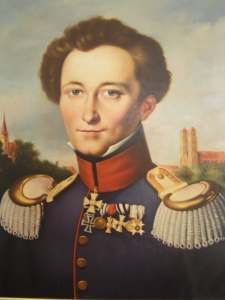
As you might have guessed, I really liked reading Richard
Rumelt's book
on strategy. But I have to say that I found his military examples less
persuasive than his anecdotes drawn from the world of business. For example, he
slams as an waste of print the statement that the mission of the Defense
Department is to "deter conflict-but should deterrence fail, to fight and win
the nation's wars." I actually think that elevating deterrence to a mission
equal to fighting wars is hugely significant, with far-reaching consequences
for force structure and spending, especially on readiness and R&D.
On the other hand, Rumelt is positively
Clausewitzian when he advises that, "A great deal of strategy work is trying to
figure out what is going on. Not just deciding what to do, but the more
fundamental problem of comprehending the situation.'' That's an Americanized
version of Clausewitz's admonition that the foremost task of the commander is
to recognize the nature of the conflict in which he is engaged, and not to try
to make it something else.
Also, Rumelt reminds me a bit of those decisions
Marshall (and, to a lesser degree) Eisenhower had to make in World War II
when he writes that, "strategy is primarily about deciding what is truly
important and focusing resources and action on that objective. It is a hard
discipline because focusing on one thing always slights another."
Rumelt on strategy (IV): First, you must learn to define the problem accurately

I think Rumelt's book
on strategy may be better at teaching people how to critique a strategy than
how to devise one. But that is still a significant act.
Rumelt emphasizes
the need to soberly confront problems. "A good strategy defines a critical
challenge. What is more, it builds a bridge between that challenge and action."
Also, he warns, "When a leader defines the 'problem' as
underperformance, it sets the stage for bad strategy. Underperformance is a
result. The true challenges are the reasons for the underperformance."
The conclusion of his best chapter, "Bad Strategy," reminded
me of the many hours I have spent reading official government documents and war
plans: "Bad strategy is vacuous and superficial, has internal contradictions,
and doesn't define or address the problem. Bad strategy generates a feeling of
dull annoyance when you have to listen to it or read it." That last sentence brought
home to me many hours of reading Pentagon documents and transcripts.
Rumelt on strategy (III): Dudes, don't confuse budgeting with strategic planning
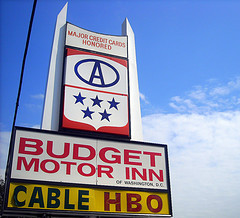
One of the themes of Richard
Rumelt's book
on strategy is that strategy is about confronting problems, not covering them
up. "If you fail to identify and analyze the obstacles, you don't have a
strategy. Instead, you have either a stretch goal, a budget, or a list of
things you wish would happen."
Rumelt argues
that most corporate strategic plans are simply long-term budget plans, not
coherent strategic approaches. "You can call these annual exercises 'strategic
planning' if you like, but they are not strategy. They cannot deliver what
senior managers want: a pathway to substantially higher performance. To obtain
higher performance, leaders must identify the critical obstacles to forward
progress and then develop a coherent approach to overcoming them."
Rebecca's War Dogs of the Week: After bomb-sniffing, then what?
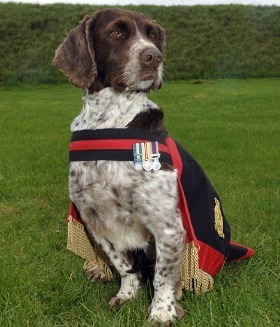
By Rebecca Frankel
Best
Defense Chief Canine Correspondent
Andy,
Brix, and Buster, three MWDs with exemplary records, all made headlines this
week announcing their retirement from war-zone service. Many readers have
commented or written in with questions and concerns about the fate of MWDs once
their careers are over and the military no longer has "use" for them. Here are
three cases that show these dogs are not only recognized for their work and service,
but transitioned out of service with tremendous care and dignity.
Buster
(pictured to the left), is a nine-year-old Royal Air Force bomb-detection dog,
"who braved bombs and bullets over five operational tours of duty" in places
like Bosnia and Afghanistan. The English Springer Spaniel, who's received a
series of medals for his service, is retiring to the home of his handler, RAF
Police Sergeant Michael "Will" Barrow. Sgt. Barrow told the Daily Mail that
Buster kept a cool demeanor during even their most dangerous work tracking down
insurgents through poppy fields: "'Each time [we were attacked], Buster waited
calmly for the action to cease, then carried on his search for improvised
explosive devices, and keeping patrols safe.'"
Then
there's Brix, a U.S.
Navy dog, who's been on patrol sniffing for bombs since 2003. Brix, a German
Shepherd, received a "traditional Navy retirement ceremony" for his nine years
of service during which he did "two tours supporting Operation Iraqi Freedom
and Operation Enduring Freedom, one tour in Afghanistan and a tour at the Horn
of Africa" not to mention serving on details protecting "the president and vice
president of the United States." [[BREAK]]
MA2
Chris Ortiz, the handler that deployed to Iraq with Brix in 2009 spoke of their
strong bond: "When we returned [from deploment], I had to separate from my best
friend. Brix surprised me every single day whether it was his training,
attitude ... [he] was able to control a crowd of 200 rowdy Iraqis and then melt
the hearts of Iraqi schoolchildren in the same day." Brix is headed to Missouri
where he will live with his current handler's mother.
And
last, but not least, there's Andy, a
five-year-old Belgian Malanois who may be done with his service in Afghanistan
but he has more patrol days still ahead. Andy was a "multi-purpose dog" for the
Army and when one of his former handlers, now a district attorney, learned the
canine was up for adoption, he "jumped at the opportunity" to bring him onto a
county K-9 force in DeKalb, Georgia, saying "Andy fits into our family and
office very well."
Interesting
War-Dog Note of the Week: Emma Haak over at Fast Company has an article out this
week breaking down the money TSA has spent since 9/11 -- a whopping $56.8
billion -- detailing where the money went and whether it was money well spent.
It's a list that includes, among other things, full-body scanners, human
screeners, and bomb-sniffing dogs:
"Amount:
$103.5 million to breed and train the bomb-sniffing dogs in this year's
Puppy Program, which could reduce the need for invasive pat-downs.
Verdict:
Maybe Worth It"
It
might be too soon to make a call as to whether or not those puppies are "worth
it," but my money is still going on the dogs. Anyone else?
October 20, 2011
20

The Navy just jettisoned
its 20th commander of the year, the skipper of the USS Kentucky, a ballistic
missile submarine.
A catchy Pakistani protest song
A
good beat, too. I was especially struck by the mocking sign claiming that
"This video is sponsored by Zionists." In your face, ace.
I only understood a fraction of the references (like kojaks
flying kites?), but an article
in Dawn makes it clear this is nervy
stuff for a bunch of kids in Lahore to put out. "Here was a bunch of raw, early
twenty-somethings poking fun at the military chief," notes Dawn with some astonishment. There is indeed a shoutout to a certain
Pakistan general. Btw, the band's Punjabi name means "the Dishonour
Brigade."
The song also name drops Blackwater in an interesting way,
implying (according to the article) that Pakistanis should stop blaming that
company and instead look at internal sources of violence.
Meanwhile, here is a solid interview about the
future of Pakistan and Afghanistan with the finely named Vanda
Felbab-Brown. She speaks much truth.
Tom's war horse of the week: Sgt. Reckless of the U.S. Marine Corps
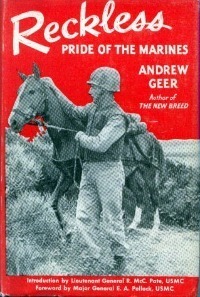
A Best Defense reader, apparently
thinking that other species should get some of the love, recommends reading
about Sgt. Reckless, a mare who carried supplies under fire during the Korean
War. On one day alone, according to this website,
she made 51 trips, carrying almost five tons of ammunition. Most of the time
she worked unescorted. She loved to eat scrambled eggs and pancakes. She was
buried with military honors at Camp Pendleton.
Meanwhile, in a nod to other
countries, a reader sends in this link to an odd photo of a World War
II German military dog cart.
(HTs to RR and MB)
Maj. Pryer: War's moral dimension has been magnified in the Information Age

By Maj. Douglas Pryer, US Army
Best Defense guest columnist
It is increasingly clear that the most significant military
outcome of the Information Revolution has been the magnification of the
importance of war's moral dimension. Or, to put this more simply, moral
judgment and this judgment's effects on the fighting spirit of nations and
warriors matter today more than ever.
That moral considerations are the most important ones in war
is nothing new. Great military theorists have long emphasized their primacy in
war.
To Sun Tzu, those "who excel in war first cultivate their
own humanity and justice and maintain their laws and institutions." By doing
so, warriors "make their governments invincible." In On War, Clausewitz described war in its pure, idealized form
as one in which violence is applied without restraint. But he also understood
that actually waging war in such a manner is impossible: social conditions,
political limitations, and other sources of moral "friction" all serve to
temper war's violence. It is by understanding such practical constraints that
"real wars" -- wars as they must actually be fought and strategized -- are won.
More recently, Colonel John R. Boyd declared that grand
strategy needs to have "a moral design." The "name of the game" in warfare, he
stated, is to "preserve or build-up our moral authority while compromising that
of our adversaries in order to pump-up our resolve, drain-away adversaries'
resolve, and attract them as well as others to our cause and way of life."
What is new, however, is the exponentially-increasing
importance of moral considerations.
In today's wired world, the moral judgments of communities
cohere with far greater consistency and power than they did historically.
Within the community of nations, for example, the Law of Armed Conflict and the
Just War Tradition in which this law is embedded are now widely accepted. For a
nation to ignore this fact is for it to risk, not just pariah status, but also
economic sanctions and the indictment of its leaders by international criminal
courts.
But such moral flattening at the global level does not mean
that the idiosyncratic values of smaller communities do not matter. Paradoxically,
perhaps, they matter more than ever. Witness the rising strength of the
"Arab Street"-of one ethnic community's collective moral judgment-as
put on display during the Arab Spring. Or, witness our own country's long
struggle against a media-empowered jihadist movement, al Qaeda, and two largely
ethnic insurgencies in Iraq and Afghanistan: like Hercules in his battle
against the multi-headed hydra, the more heads of the beast that America has
physically severed, the larger and more dangerous the monster has grown. [[BREAK]]
This is not to say that the U.S. government and our military
are not taking war's moral dimension seriously. We are. The 2006 U.S. Army and
Marine counterinsurgency manual was well-grounded in moral ideas-ideas that
helped engineer a much more successful approach in Iraq. New recruits now
receive extensive instruction on the Law of War. In 2008, the Army stood up the
Center for the Army Profession and Ethic to "reinforce the Profession of Arms,
Army Ethic, and culture." And "culture training," which is really just moral
awareness training regarding the locals on a given battlefield, has received
much more attention in both the Army and Marines.
But unsupported by any substantial shift in resources or
foreign policy, such measures are proving inadequate. Most shamefully, the
moral "hits" our troops generate in Iraq and Afghanistan -- as demonstrated by the
2010 "murder for fun" tragedy -- just keep on coming.
The resistance of military procurement
processes to moral ideas is one reason for the U.S.'s long string of moral
defeats in Iraq and Afghanistan. To effect better outcomes from today's
conflicts, the U.S. government must first spend less on "hard power" (missiles,
fighters, submarines, and robots) and more on "soft power" (diplomacy,
economics, and information). Also, when the U.S. government strays far from
using the American military for its Constitutionally-ordained purpose of
defending the republic (a purpose attracting the long-term approbation of
nearly all Americans), it must attempt extraordinary, costly, and sometimes
impossible measures to sustain at home a sense of moral legitimacy and the will
to fight.
Truly, operating with moral awareness at all
command levels -- to include the national command level -- requires a whole of
government approach.
But there are certainly steps our military
alone can take to display greater moral awareness and help America achieve
better outcomes from its foreign conflicts. In general, our military needs to
spend less on kinetic-focused intranet and more on ensuring we are
communicating the right message via the internet and our actions to key
communities -- Americans at home, the international community, and influential
ethnic, political, religious, and social communities on our battlegrounds.
Specifically, steps our military must take
include the following:
(1) In the quixotic quest to give U.S. troops
"information dominance" on the battlefield, the American GI has slowly assumed
a sci-fi, cyborg-like appearance. One might as well expect a Star Wars village
of Ewoks to embrace Imperial Storm troopers as expect the village elders of
third-world countries to welcome hardware-encumbered American soldiers
surrounded by small land robots and flying R2D2s. Our troops certainly need the
best armor they can receive as they move about on today's IED-strewn
battlefields. But rather than spend billions on extensive communications
systems and remote-controlled robots, we would be wiser to rely instead on more
robust culture and ethics training, human intelligence collection, and
intelligence analysis.
(2) U.S. military regulations and doctrine are
a babble of discordant voices on the subject of the American profession of
arms. DoD and joint regulations differ on the core values of service members,
and each service has its own unique set of values and definitions. Worse,
scriptures like the Army's Soldier Creed and Warrior Ethos actually promote
such amoral qualities as blind obedience to authority, devotion to technical
competence and kinetic action, and a win-at-any-cost attitude. Also, even
though our counterinsurgency manual declares boldly that if we lose "moral
legitimacy," we "lose the war," this crucial idea is largely ignored in other
DoD, joint, and service manuals. We do not need more doctrine about the
American profession of arms-quite the contrary. What we need is doctrine that
is clearer, more ethical, better taught and understood, and more consistent
across all of the services.
(3) Ethics training in most line units has
changed little in recent years. In the Army, it usually consists of an annual
or pre-deployment PowerPoint lecture delivered by a lawyer or chaplain. This
training needs to be command business. As one executive officer for a cavalry
squadron put it: "I guess I'm a simple guy, but from my combat experience,
having a battalion commander talk to every soldier about coming home with their
honor intact worked." Furthermore, operations officers-not lawyers or
chaplains-need to be this training's primary staff proponent, and these
officers need to be resourced so they can integrate moral considerations into
training at all levels. For example, troops need to practice the principles of
discrimination and restraint on all live-fire exercises, to include tank tables
and weapons qualification ranges.
(4) We are by far the most classified military
generation in U.S. history. Our default setting for keeping documents
classified is decades rather than months or a couple years. Nearly all of the
computers and networks supporting combat operations are classified systems, and
almost everyone using these systems routinely classifies the traffic they
generate-even when there is no reason for secrecy. This lack of transparency is
a shame, for U.S. service members conduct themselves much better on the
battlefield than many people realize. However, without sweeping and expensive
changes to how the U.S. military manages information, we will continue to
struggle to convince the world that the civilian deaths we cause are mistakes
or that an atrocity committed by a service member is an aberration.
(5) Staff planning models should be updated to reflect the
importance of maintaining a moral advantage over the enemy. Field Manual 3-0, Operations, does have a useful
discussion on the importance of moral concerns to determining a side's "center
of gravity," but the importance of maintaining a moral advantage over the enemy
is less clear and largely missed in this doctrine. Additionally, when staffs
assess possible courses of action, evaluation criteria should focus on such
moral questions as: Which course of action (COA) should best promote the
legitimacy of the host nation government? Which COA should result in fewer
U.S.-inflicted civilian deaths and injuries and less property destruction? Similarly,
the "measures of effectiveness" for a strategy, campaign, or mission order
should reflect the same moral questions: Has the legitimacy of the host nation
government actually increased? Have U.S. forces inflicted fewer civilian deaths
and injuries and less property destruction? And so on.
(6) Once a leader or soldier is commissioned or
enlisted, his professional military education rarely touches upon the subject
of ethics. The vast majority of military schools-even those lasting a year-do
not require more than a few hours of ethics-related instruction. Even at West
Point, where ethics education probably surpasses that of any other military
institution, the curriculum is relegated to the second-year of college, and
cadets largely overwrite those principles and forget about them in the final
two years of study. Philosophy in general is remembered as an amusing
afterthought for most cadets by the time they graduate. Considering the moral
nature of our military defeats in recent years (Abu Ghraib, Gitmo, Haditha,
Mahmudiya, etc.) as well as the sometimes close relationship between PTSD and
the unresolved ethical questions of PTSD's sufferers, we must clearly do a far
better job of providing ethical guidance and a mechanism for building inner
spiritual armor to service members before sending them to combat.
Napoleon once observed that "morale is to
the physical as three is to one." (High and low morale is inseparably
intertwined with moral judgment. Indeed, there is very little difference
between having a sense of moral purpose and possessing the will to fight.) Today,
thanks to the Information Revolution, it is no overstatement to say that the
moral is to the physical as ten is to one, and this relative importance
promises only to grow. Whichever side maintains the moral advantage in a 21st-century
conflict (that is, best declares and wages war in accordance with the ethical
expectations of the communities upon which it depends for victory) has the best
chance of ultimately "winning."
The 2006 counterinsurgency manual was the first of several
strong steps our military has taken to ensure leaders and troops operate with
moral awareness at all command levels. But these steps are not nearly strong
enough. We must do much more if we are to earn better outcomes from our armed
conflicts abroad-and at a much more acceptable cost in blood and American
treasure.
Major
Douglas A. Pryer is the winner of several military writing awards and the
author of The
Fight for the High Ground: The U.S. Army and Interrogation during Operation
Iraqi Freedom, May 2003 - April 2004. This guest blog is Major Pryer's work
and does not reflect the opinions/policies of the U.S. Army or perhaps even those
of Albert Pujols. Specifically, it derives from three essays: "Controlling the
Beast Within: The Key to Success on 21st-Century Battlefields" and
"Steering America's Warship toward Real Communication (and Success) in the 21st
Century," which won the 2010 and 2011 General William E. DePuy writing
competitions respectively; and "War is a Moral Force: Designing a More Viable
Strategy for the Information Age," which was co-written by Lieutenant Colonel
(Retired) Peter Fromm and Major Kevin Cutright and which will be presented by
Fromm and Cutright at the 2011 U.S. Army Command and General Staff Ethics
Symposium at Fort Leavenworth, Kansas, on Nov. 7-10.
Qaddafi qone
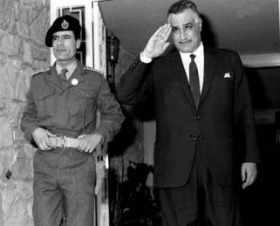
Qood.
(In the foto, that's him on the left, before he went all Bob
Dylan.)
Thomas E. Ricks's Blog
- Thomas E. Ricks's profile
- 436 followers



